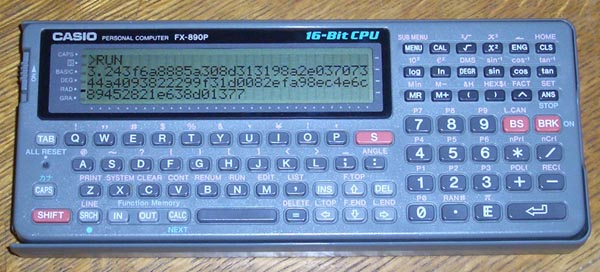
Casio FX-890P

Specifications
Comments
This is one of the more interesting "Pocket" computers I have in my collection. The FX-890P was only sold in Japan, and as such I can't decipher most of the manuals. The most unusual thing about this computer is that it is programmable not only in BASIC (which is the staple of most pocket computers) but also in K&R C as well as x86 assembly.
Even more interesting is that the C is interpreted, not compiled. It even has bounds checking on arrays and as far as I've been able to ascertain, you can't access or modify unallocated memory via pointers. After the initial "hey, neat!" factor of the C language on this thing, I started to wonder exactly why anyone thought that an interpreted, K&R C would be a good idea for a pocket computer. It's not any faster than the built in BASIC and it's annoying as heck to program C on the tiny keyboard since C requires so many shifted characters (curly braces, brackets, etc...). Plus, it uses K&R syntax which is annoying in and of itself. And the 4-line display doesn't exactly lend itself to editing C:
if( a > b )
{
return;
}
is already 4 lines: editing larger blocks of code just becomes painful.
You'd also think that having C support would make it necessary (or at least convenient) to have an actual filesystem in memory, but like all other Casio calculators/computers that I've had the pleasure of using, it divides available memory into 10 sections or "files", P0 through P9. Luckily you get a separate P0-P9 for BASIC, C, and assembly. If you want to #include another file you can do so using #include<Pn>. The naming convention isn't particulary descriptive, nor does having only 10 files give you much space to work with. There appears to be an external floppy drive available for this computer which probably alleviates some of these problems while making the system considerably less portable.